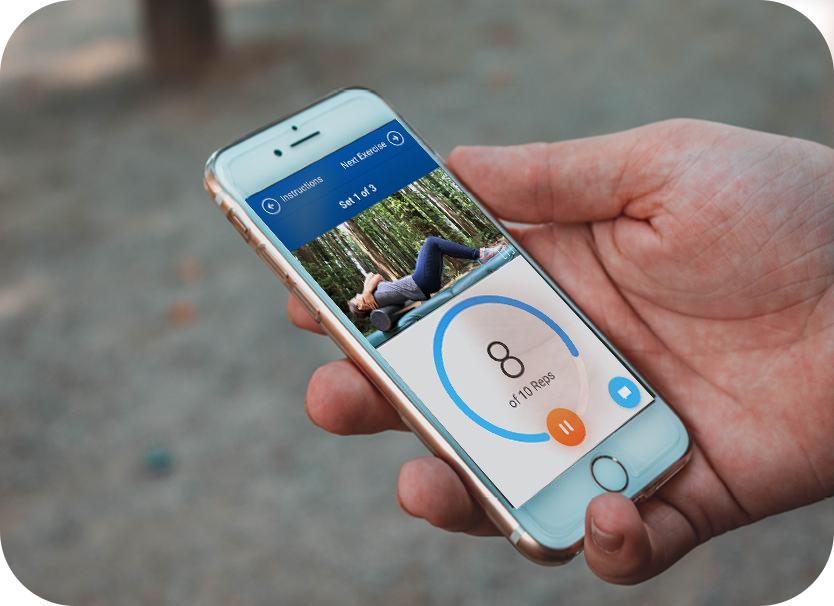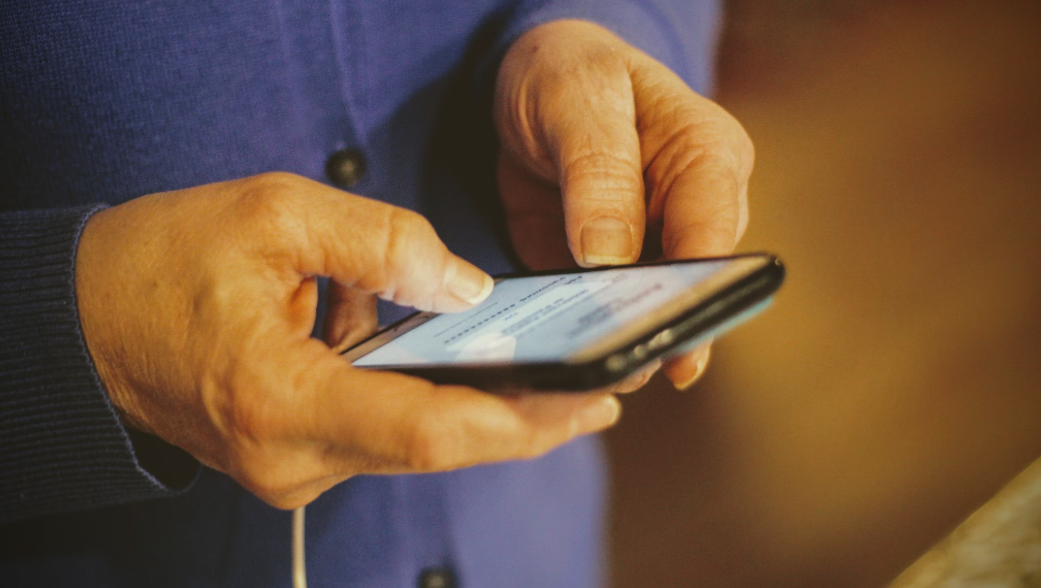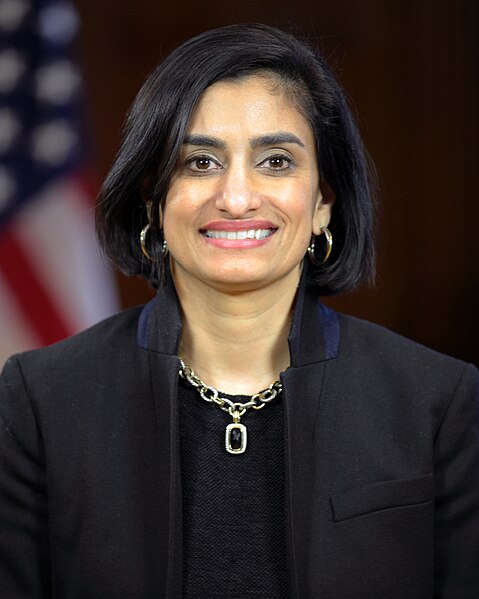Recently our very own Mark Luck Olson took some time to sit down with Beth Bierbower of the B-Time podcast to discuss digital healthcare delivery and how it has exploded over the last several years, with digital MSK being a big part of this massive growth.
Mark Luck Olson
Mobihealthnews: Seniors Aren’t Tech-Averse. We’re Just Not Designing for Their Needs.
By Mark Luck Olson
Seniors are certainly less tech-savvy than younger generations who grew up with it. My parents are from the World War II generation, long before there was the personal computer, let alone the internet. Trying to help my aging mother with email is a challenge. But just because some may not know how to use TikTok, what a nonfungible token is or how to make the WiFi work doesn’t mean they are technology averse.
Digital Health and the Demise of Point Solutions
With all the froth in digital healthcare, and in virtual musculoskeletal (MSK) care specifically, people often ask me how RecoveryOne is different. Part of my answer: we despise point solutions. Half of all adult Americans suffer from MSK conditions each year, and comorbidity is the norm. With such a high prevalence of joint and muscle issues, healthcare managers are looking to MSK solutions to establish and nurture whole-person consumer relationships. In what other category do you have the opportunity to engage with as much as half your population around real healthcare needs each year? And because mobility is the keystone of managing a wide variety of chronic diseases, stand-alone MSK solutions just don’t work.
For years, employers have had no option but to tolerate point solutions in healthcare. There hasn’t been much choice. Even health plans’ involvement in digital MSK care has been largely limited to distribution of stand-alone solutions — until now, that is. Frustration with the maze of point solutions has set in, and employers are fed up with niche answers to systemic problems. We’ve built our solution as an “Intel Inside” for health plans and other risk-bearing entities who are looking to create an integrated consumer experience.
RecoveryOne’s solution was purpose-built so that those who finance and manage healthcare could integrate our solution into a broader health ecosystem. To us, this is so much more than a slogan. Making it real requires a series of concrete capabilities, including:
- A turnkey consumer marketing and communications platform that can be implemented on a shared member engagement platform.
- The ability to onboard consumers agilely, whether through our own multimodal consumer marketing platform, or via referrals from your provider(s).
- Partnering with you in group sales to and train your sales executives and account managers with the value propositions necessary to drive group uptake.
- Dynamic white-labeling so that the end-to-end experience can be branded as you choose.
- A robust library of APIs to enable a seamless workflow for the consumer.
We have no interest in competing against our target customers (health plans, health systems, and benefits administrators) with point solutions that just make problems worse. Over the next few weeks, we will be releasing exciting news about some of our customers and the results we are generating. The headline: you no longer need to tolerate point solutions. We’re proud to be the MSK-inside-your-solution, generating superior clinical and economic results through an evidence-based recovery journey designed around the consumer.
Five Lessons Learned, Three Years In.
I just reached my three-year anniversary with RecoveryOne. Thought I’d share some hard-won pointers that I picked up along the way…
- Win through your team and culture. Helping consumers recover from painful #MSK disorders is hard, and getting people engaged in their own recovery requires tremendous courage and resilience. Thus, having the most talented and dedicated team is key to success in everything else. We must care for those who care for our members, which starts with nurturing a culture where everyone feels a sense of belonging and higher purpose.
- Changing consumer behavior is hard and requires a variety of interventions. For some people, a loving grandparent will do the trick; for others, a drill sergeant is exactly what’s needed. Some of our members are motivated by education, by gamification, or by seeing how their pain has improved in the last couple of weeks — especially when they’re having an off day. Still others find inspiration in connecting with people who are going through a similar experience. Whatever the means, we know there is no universal solution. That’s why we use highly trained behavior change specialists to understand what each member needs and to motivate members to get and stay engaged.
- The birthplace of engagement is satisfaction. If you want to inspire and motivate people — particularly those facing a stressful, anxiety-producing situation — you have to create an environment that is simple, intuitive, friction-free, and accessible to all. While satisfaction on its own doesn’t generate adherence, you don’t have a shot at true engagement without superior satisfaction.
- Engagement matters a bunch, but recovery matters more. Other companies in our space love to tout their engagement rate. To be fair, we do, too: ours is 82.1 percent. Let’s pause and think about what that really means, though: 82 out of every 100 people who begin their recovery on our platform complete their recovery. In actuality, then,it’s a completion rate. We shouldn’t get overly enamored by program completion on its own. When your loved one completes a 90-day treatment for a substance use disorder, does that always mean they are fully recovered? Of course not. Getting and staying engaged through the end of a program is a great leading indicator, but completion is not an end itself. That’s why, beginning in late 2019, we started to measure and work to improve our recovery rate: the percentage of members who actually recover fully in terms of pain and/or function, based on objective thresholds established in the medical literature for specific diagnoses and procedures. Our recovery rate is 77.4 percent. Do you know yours?
- Focus on the end-to-end recovery journey, not the visit. So often when I meet new people, they assume that we use the same visit-by-visit model as conventional, in-person physical therapy (PT). Because many PT clinics are paid to be “visit factories” (i.e., they focus on visits as the keystone of MSK recovery), the assumption is understandable. Digitizing a PT visit may be helpful, but optimizing the cost and quality of the journey from “ouch” to “all better” with an evidence-based, customized solution is where the real opportunity lies. Sometimes, that journey warrants virtual care; other times, it warrants in-person care. Sometimes, a surgeon is required; other times, a PT is needed. More often, optimal recovery demands a particular mix. The bottom line is that you don’t want to be a modality looking for a problem. Rather, you want to solve each disorder using a precise blend of treatment options in a continuously personalized way.
While the strategies I’ve learned throughout these past three years have been game changers, I know there is still much to be explored in the world of MSK recovery. I can’t wait to see what the next three years have in store.
MSK Disorders Have Largely Gone Untreated During the Pandemic
What Happens Now?
During the ongoing COVID-19 pandemic, usually busy operating rooms across the country have often stood empty as hospitals paused elective surgeries to focus resources on treating patients affected by the virus and patients delayed care for fear of exposure. Overall hospital visits hit a record low in April, dropping 33 to 62%. A huge drop in treatment for musculoskeletal (MSK) disorders played a major role in declining volumes and hospital revenues, with hip replacement surgeries down 79%, knee replacements down a stunning 99% and spinal fusions down 81% during a two-week period in March and April 2020 compared to the same period in 2019.

But, of course, these declining volumes don’t mean that the need for MSK care lessened. While utilization rates have been significantly lower for these services during the peak, as states reopen and elective surgeries are rescheduled, a tidal wave of demand for care that has been delayed could swamp the system. At the outset, it may be difficult for patients to schedule surgery in a timely manner as demand surges while providers limit the number of patients they see—further delaying much needed treatment. MSK patients who put off care and now face an additional delay in accessing care may require more complex and costly treatment because their condition has worsened.
Beyond the issues surrounding delayed MSK care, stay at home orders have left most Americans seeking a cure for severe cabin fever. After months of limited activity, more people are getting outdoors to run, walk, and bike, or are starting new home workout routines to help them get back in shape and avoid the “quarantine 15” weight gain. Unfortunately, this sudden increase in activity is likely to further swell the numbers of those with MSK problems, from back and knee pain to the exacerbation of previous disorders such as herniated discs and arthritis.
An innovative approach to getting people the MSK recovery care they need now
While additional care delays may be difficult for patients, they provide employers and payers with an opportunity to put in place an early intervention system that provides ready access to care to mitigate the severity of MSK disorders without the need to risk COVID-19 exposure in a bricks and mortar healthcare facility.
RecoveryOne can serve as that early intervention system, delivering digital PT and coaching to guide a structure program that helps people manage and reduce the pain and loss of function caused by MSK disorders. Not only does this recovery care have the potential to decrease pain, it can also reduce the use of opioids, lowering the risk of overuse of these highly addictive medications. Our comprehensive virtual recovery program is also a safe alternative for people who remain hesitant to seek care at a healthcare facility or undergo surgery, especially those who are older or have underlying conditions that mean they are at greater risk from COVID-19.

Our digital MSK recovery solution also has the potential to help employees and plan members avoid surgery in many cases. In fact, many MSK specialists recommend PT as the first line treatment for a wide range of musculoskeletal problems. One study published in the Annals of Internal Medicine found that for people diagnosed with lumbar spinal stenosis, those who underwent six weeks of PT achieved the same improvement in physical function as those who underwent surgery without experiencing the complications of infection, delayed wound healing and repeat surgery. Our data, based on millions of digital sessions, shows that this model can improve function for both acute and chronic low back pain by over 90% while significantly reducing pain to an average of 1.5 on a scale of 1 to 10. It can also reduce surgical procedures and lower costs for health plans and employers while keeping users happy and engaged.
Of course, surgery is sometimes the most appropriate course of treatment. When employees and plan members need to undergo a procedure for their MSK condition, RecoveryOne’s digital PT and coaching solution provides a comprehensive prehab program from the safety and convenience of home. We provide a structured exercise program that follows rigorous clinical pathways to help them get stronger and healthier so they can better tolerate surgery. RecoveryOne also provides the post-surgical rehab support these employees and plan members need to recover more quickly, feel better sooner, and get back out there.
In the News – Why Managed Care Organizations Must Consider the Effect of COVID-19 on MSK Care
This article originally appeared in Managed Healthcare Executive. To read the entire article, please go to the original article page.
All across the country, and in fact globally, musculoskeletal (MSK) care has become difficult if not impossible for most patients to access because of the COVID-19 pandemic. These injuries may be piling up on couches and porches across America as many go without help. Many hospital-based physical therapy (PT) centers and private PT practices have paused providing in-person assessments and care to avoid close personal contact that increases the risk of spreading the virus.
Although access to MSK care has contracted, the urgent need for these services has not. MSK disorders affect half of all American adults, with more than 126 million Americans over the age of 18 reporting being diagnosed with one of these conditions. These disorders have a significant impact on the health and quality of life of those affected, with approximately 18 million reporting an MSK disorder prevents them from performing daily activities, including walking unaided, bathing, and using the bathroom.
Beyond the pain and limitations experienced by individuals, MSK disorders also exact a high economic cost, affecting employers in every industry as well as insurers:
• MSK disorders account for $213 billion in direct and indirect costs, according to a CDC survey.
• Back and neck pain alone are responsible for 290.8 million lost workdays, according to one study.
• Employers spend $20 billion a year on MSK disorders, accounting for 17% of their total healthcare budgets.
• Direct medical expenses cost payers a total of $130 billion.
These numbers are projected to continue to grow substantially as the number of older Americans increases.
Read more of the original article on Managed Healthcare Executive.




 The need for MSK solutions aimed at the senior population
The need for MSK solutions aimed at the senior population




